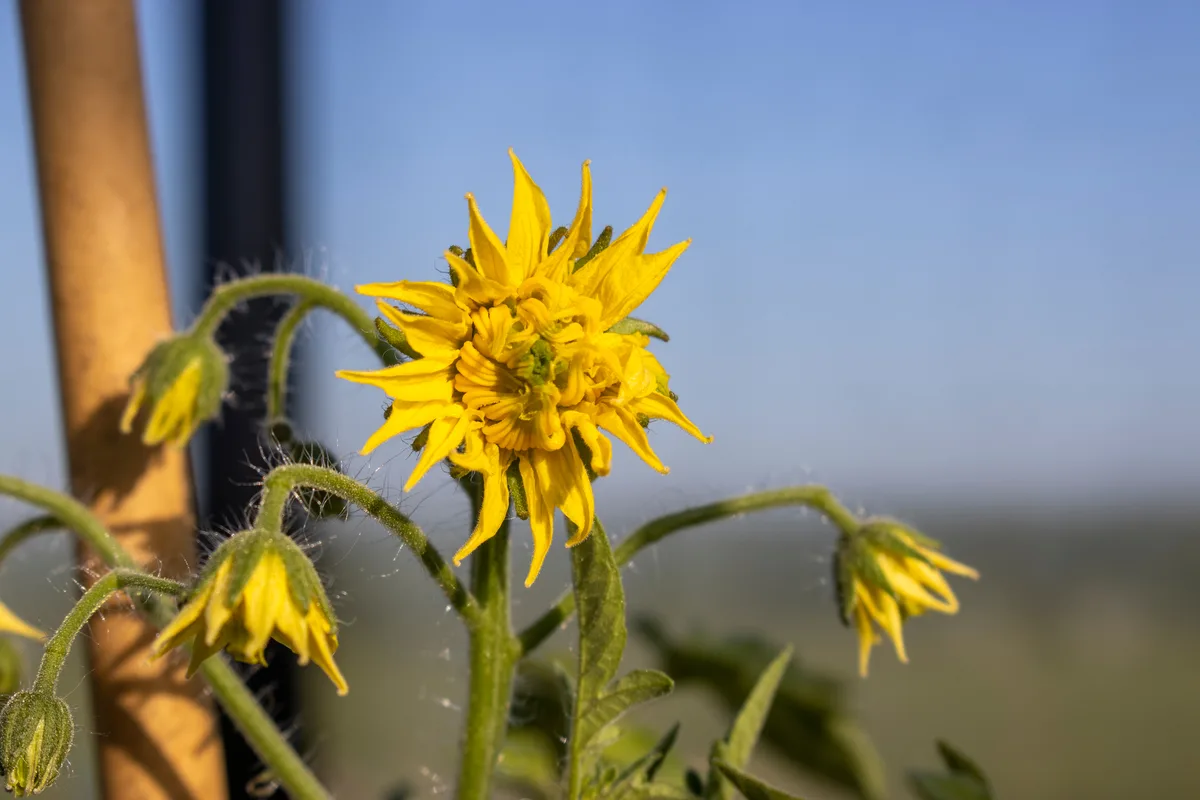
If you’re a longtime tomato grower, you’ve probably harvested your fair share of wonky fruit over the years. Rarely do we enjoy a bumper crop of perfectly shaped tomatoes with nary a blemish in sight.
We’re happy to harvest these funny fruits because we don’t need an advertising agency (I’m looking at you, Misfits Market) to sell us on the idea that they taste just as good.
We’re gardeners. We already know our produce tastes better than anything you can buy in the store or have shipped to your door.
But now and then, you get a tomato that’s downright freaky looking. Maybe even a little scary. You look at it and think, “Should I eat this?”
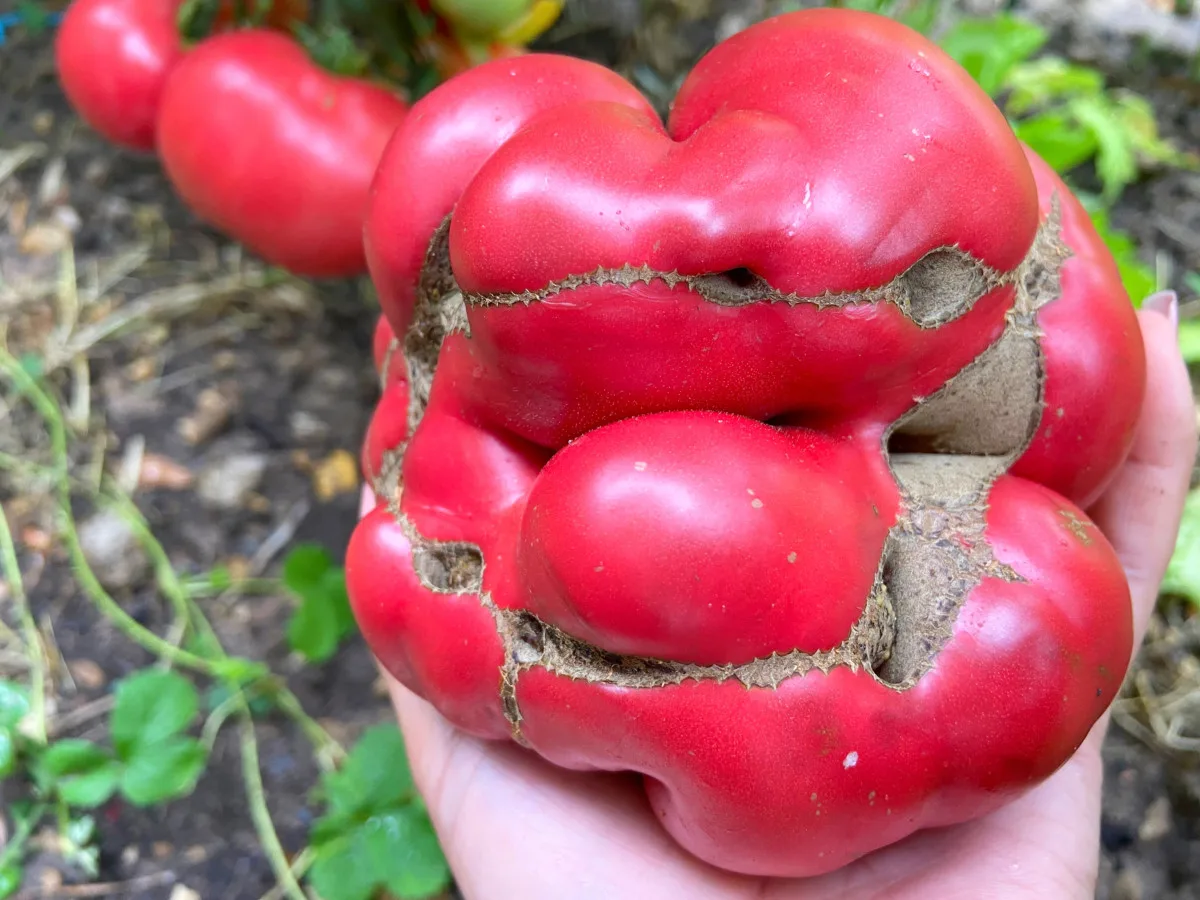
What you’ve probably got on your hands is a catfaced tomato.
Yeah, I know. I don’t see the resemblance either. I didn’t come up with the name, and I’m sure cats everywhere are highly insulted. At least, they should be.
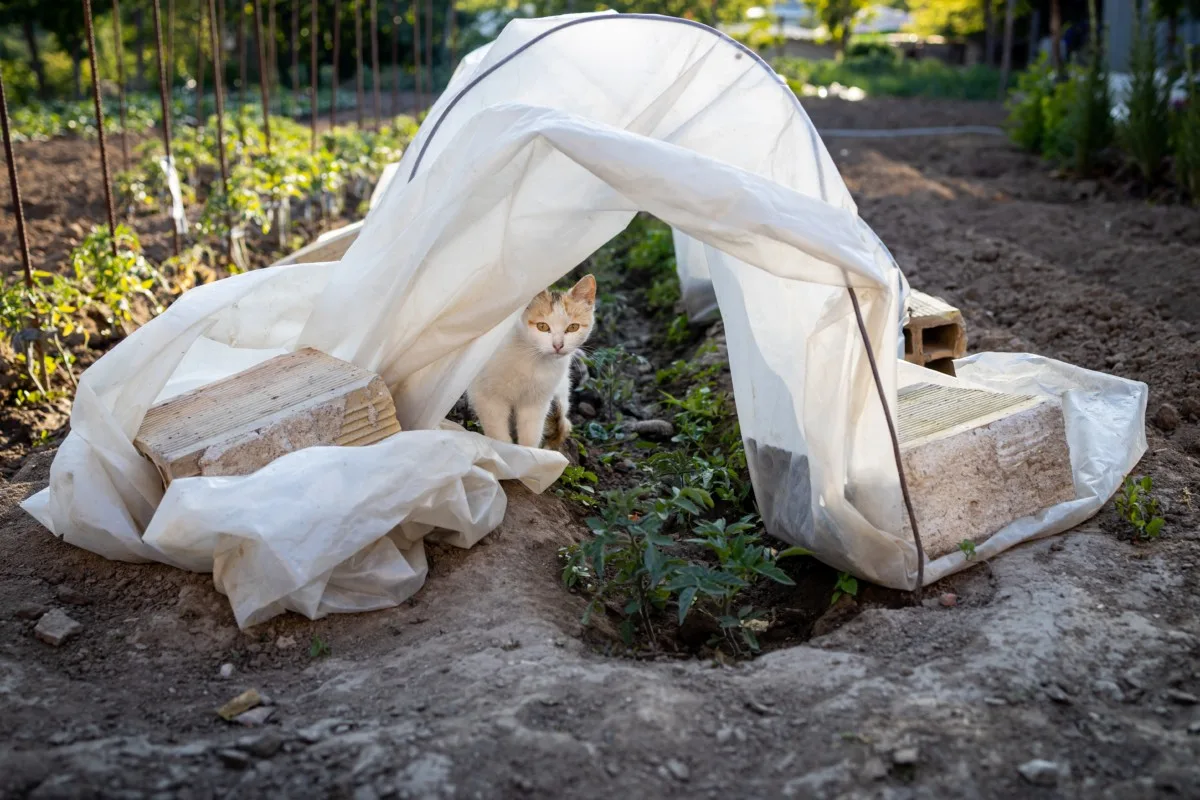
This problem (among the many other tomato problems) sends many a tomato grower running to the internet for answers every year. So, we’ll explain what catfacing is, how it happens, what to do with catfaced tomatoes and how we can prevent it in the future.
What Is Catfacing?
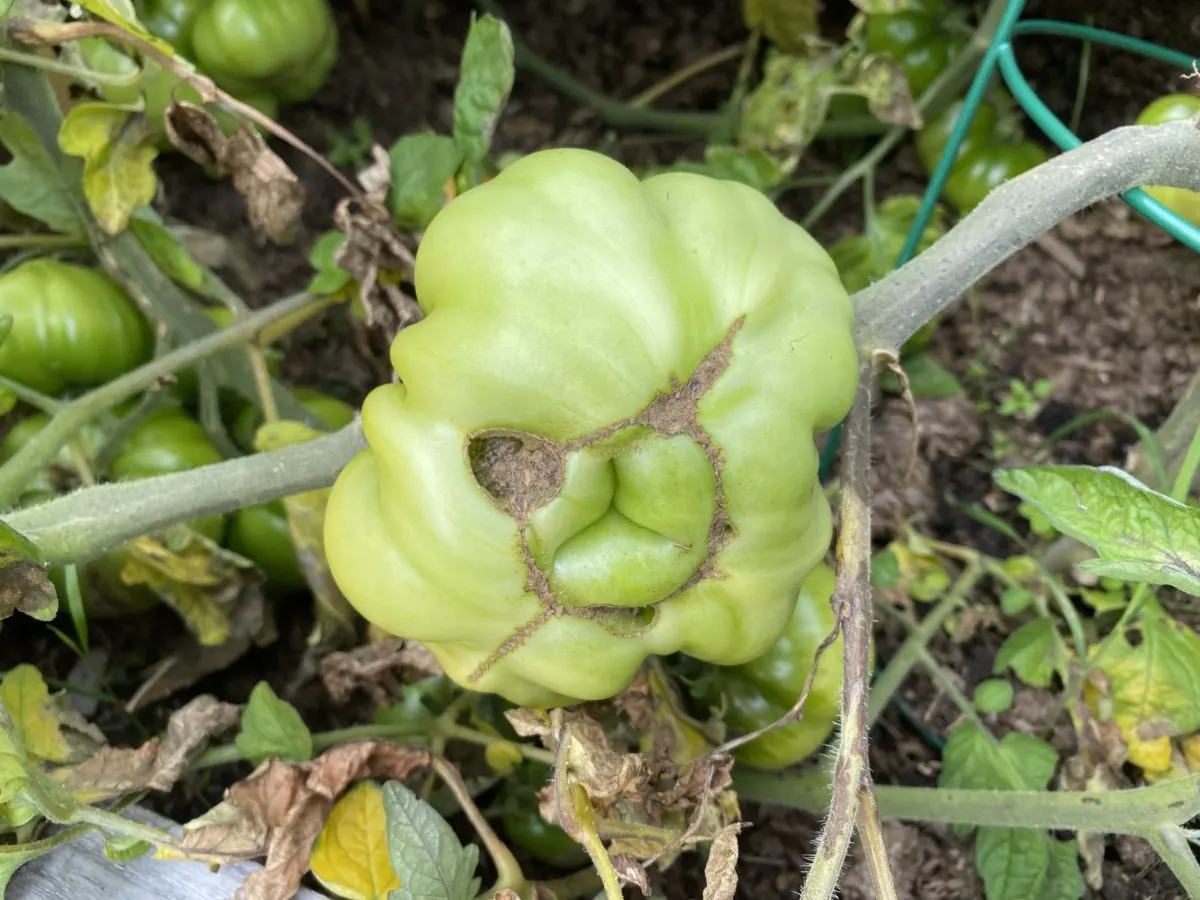
Catfacing is the term used for tomatoes (as well as strawberries and a few other fruits) that develop severe physical abnormalities and skin lesions at the sight of the blossom scar.
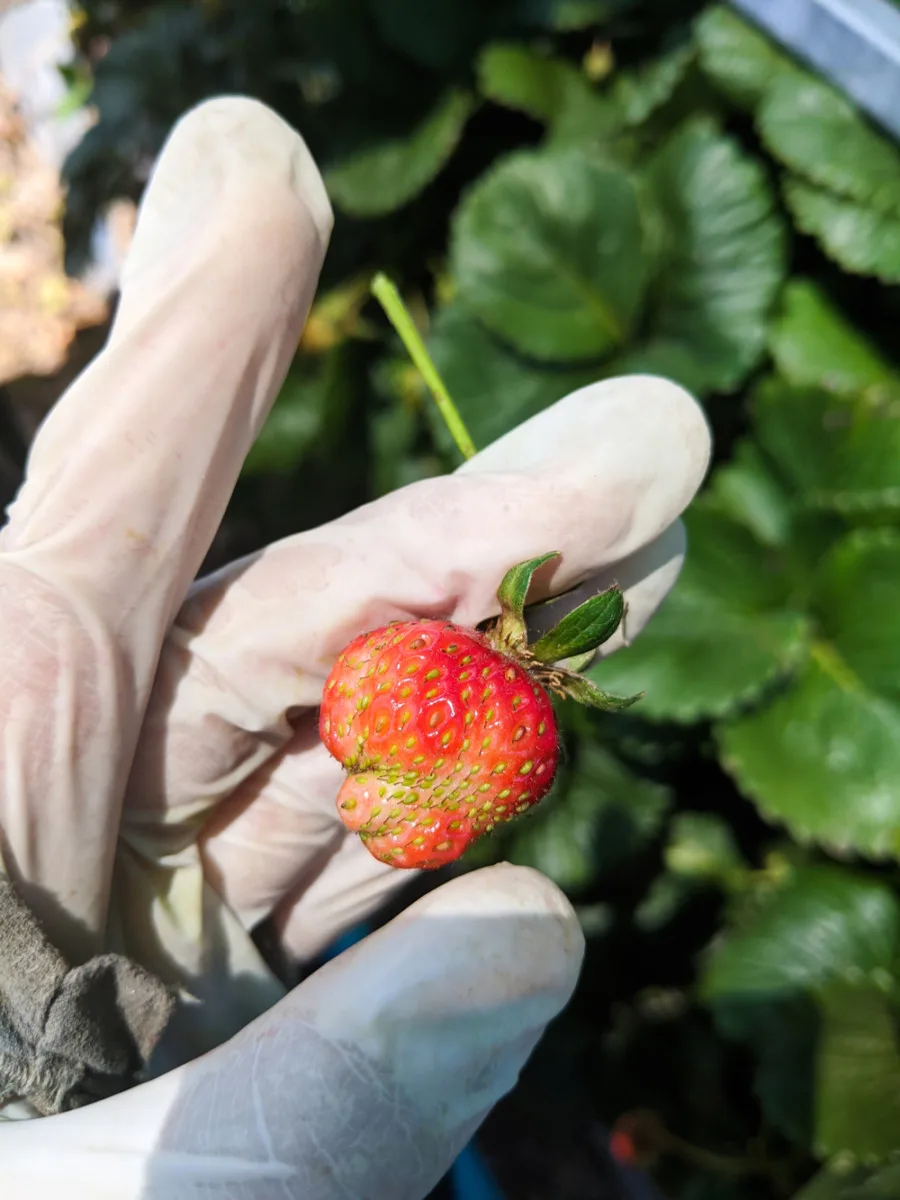
Usually, the fruit forms multiple lobes, or folds in on itself as it grows or develops holes. It can also have cork-like scars on the bottom of the tomato. These scars can appear as thin rings or thick, zipper-like lesions.
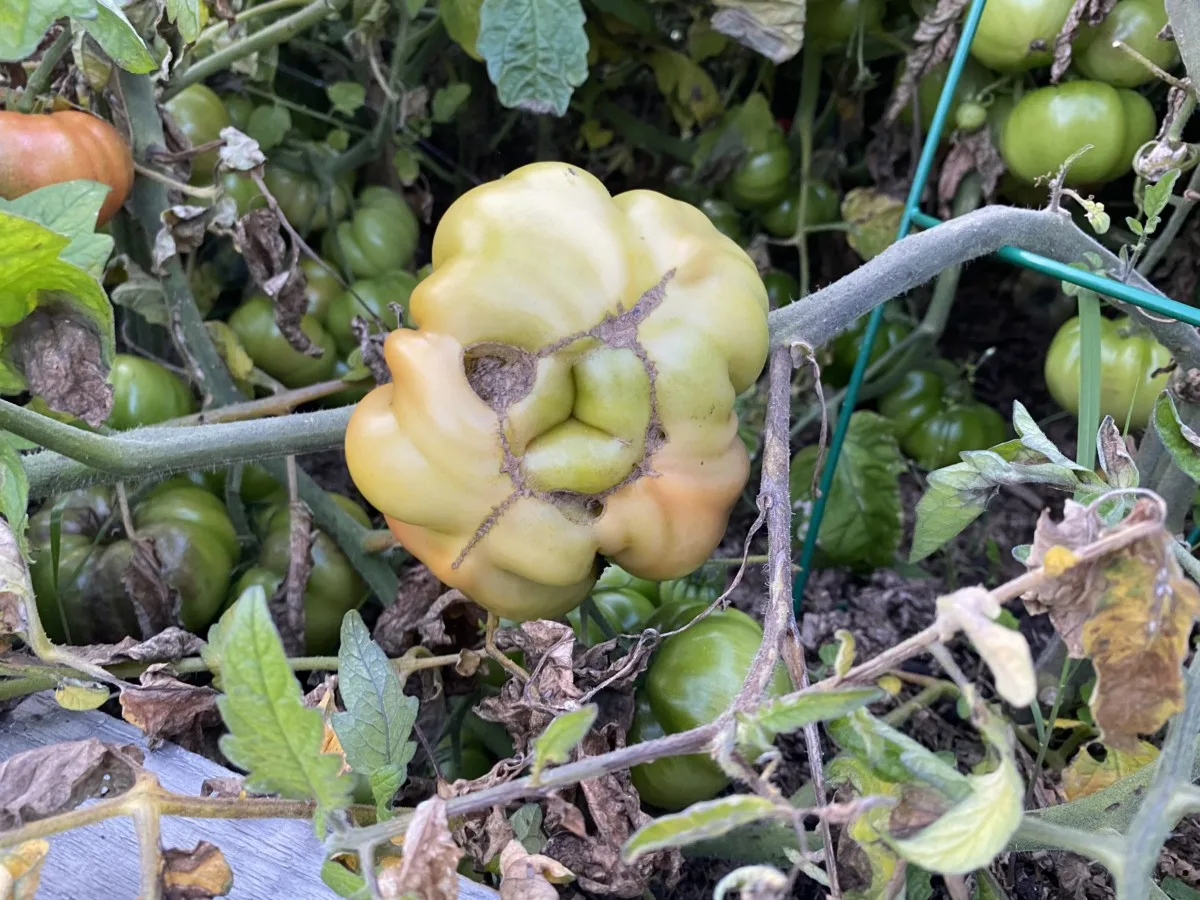
A Quick Note
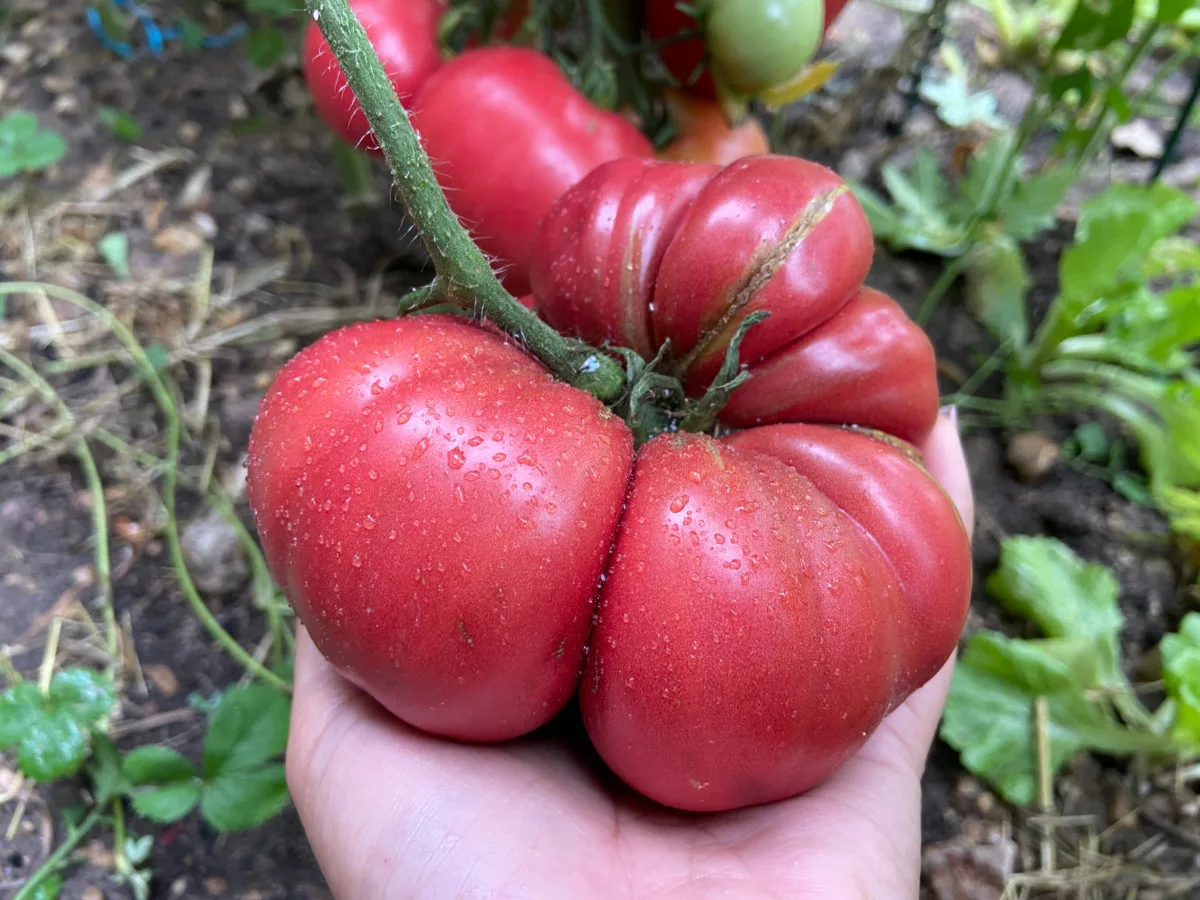
Sometimes these Frankentomatoes look as though more than one tomato tried to grow in the same space, and the blossom scar is relatively unscathed. If it looks like several tomatoes squashed into one, then this could be the result of a megabloom. A megabloom is a fused tomato flower with more than one ovary, resulting in a tomato growing into a tomato growing into a tomato…you get the idea.
Related Reading:
Back to catfaced tomatoes, we’ll put your fears to rest right away. Many gardeners’ first thought when encountering a catfaced tomato is…
Can I Eat a Catfaced Tomato?
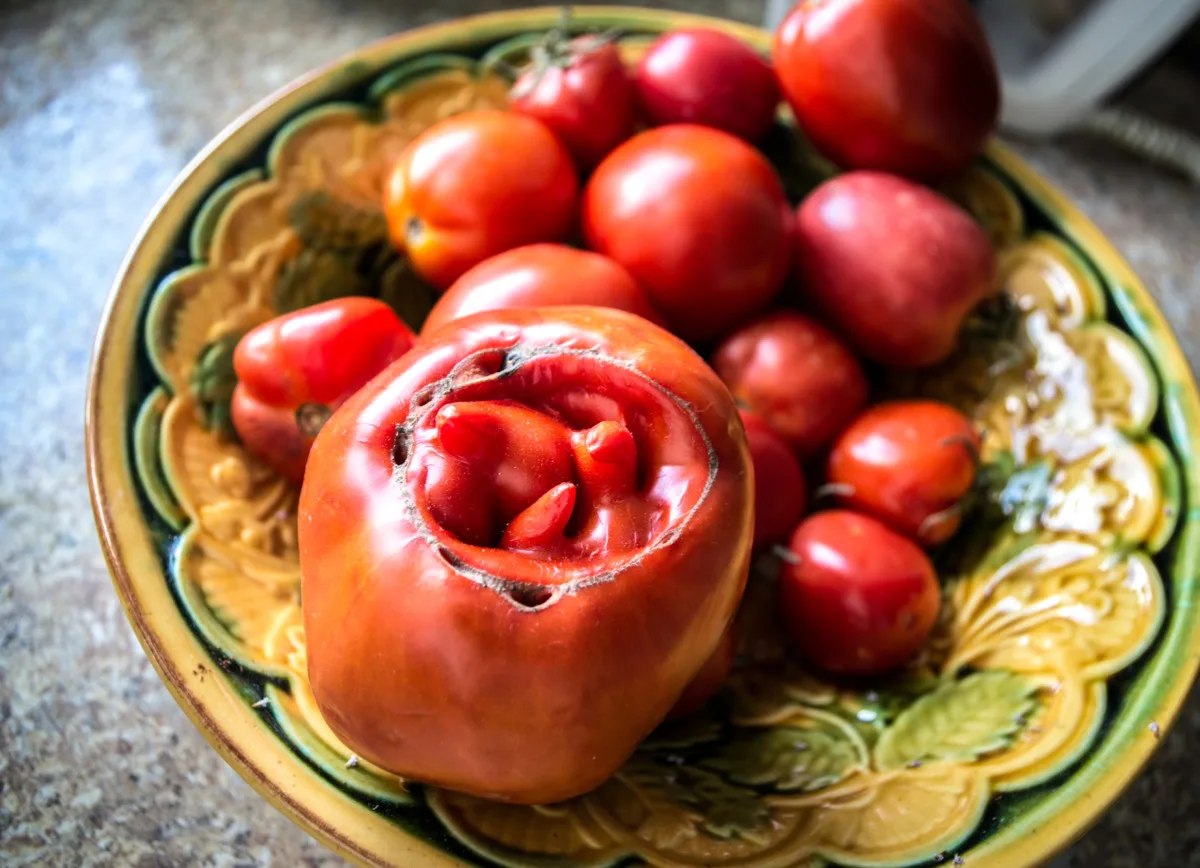
Yes, absolutely! With one small caveat.
Catfaced tomatoes are just funny looking. That particular fruit got some very mixed-up messages from its genes when developing, and it didn’t follow the original ‘tomato’ blueprints.
They’re still quite edible, and the growth abnormalities do not affect the flavor of the tomato.
Some of the best-tasting tomatoes I’ve ever eaten were hideous-looking catfaced heirlooms. Despite being strange-looking, their flavor rivaled most of the fancy hybrids I’ve grown over the years.
The caveat is when catfacing causes an open wound on the tomato.
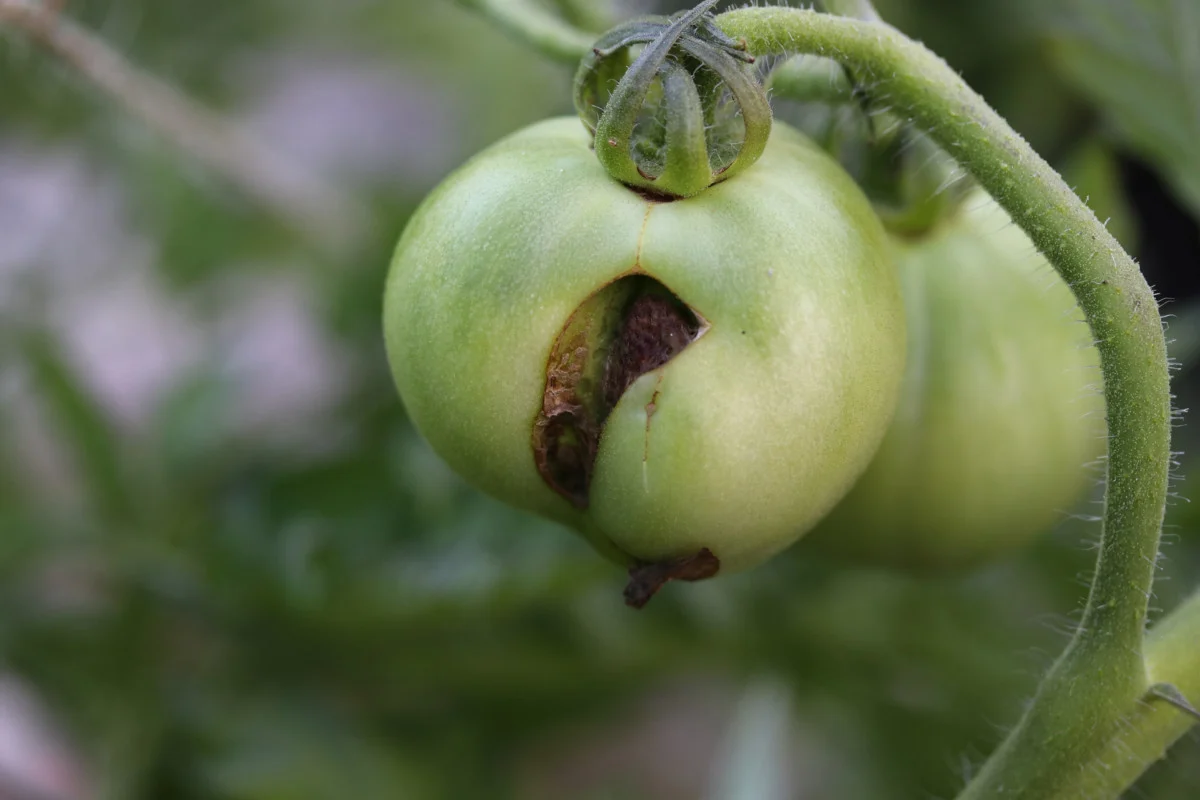
Once in a great while, you will have a tomato with such dramatic folds and bumps that it will cause the skin to stretch and brake open, leaving an open wound on the tomato. Sometimes very thin skin may regrow on these wounds.
Use your best judgment if your tomato has an open wound or a thin-skinned spot. We all know open wounds on plants invite bacteria and disease.
Black mold can develop on these spots; it’s pretty obvious when it does. Or the tomato may be soft in that area if it’s starting to rot. If that’s the case, you can cut out the bad spot if the tomato is large enough, or you may have to compost your poor tomato if it can’t be saved.
Whenever I get a severely catfaced tomato, I always eat that one first.
This way, if there are thin spots or open wounds, I will find them right away when I’m slicing up my tomato. Whereas, if I let it sit on my counter and there is a hidden soft spot or wound, I will usually find a rotted tomato sitting in a pool of its juices a day or two later.
Again, use your best judgment.
What Causes Catfacing in Tomatoes?
The short answer is – we don’t know. There hasn’t been enough research to pinpoint a cause.
As someone who used to work with labs funded by grants, I can say that problems like this are tough to get funded. It’s not a disease that will make us or the plant sick. As it’s only a cosmetic issue, getting funding for this kind of research would be difficult.
However, it’s a common enough problem that within the scientific community, many agricultural scientists have some theories as to what causes catfacing.
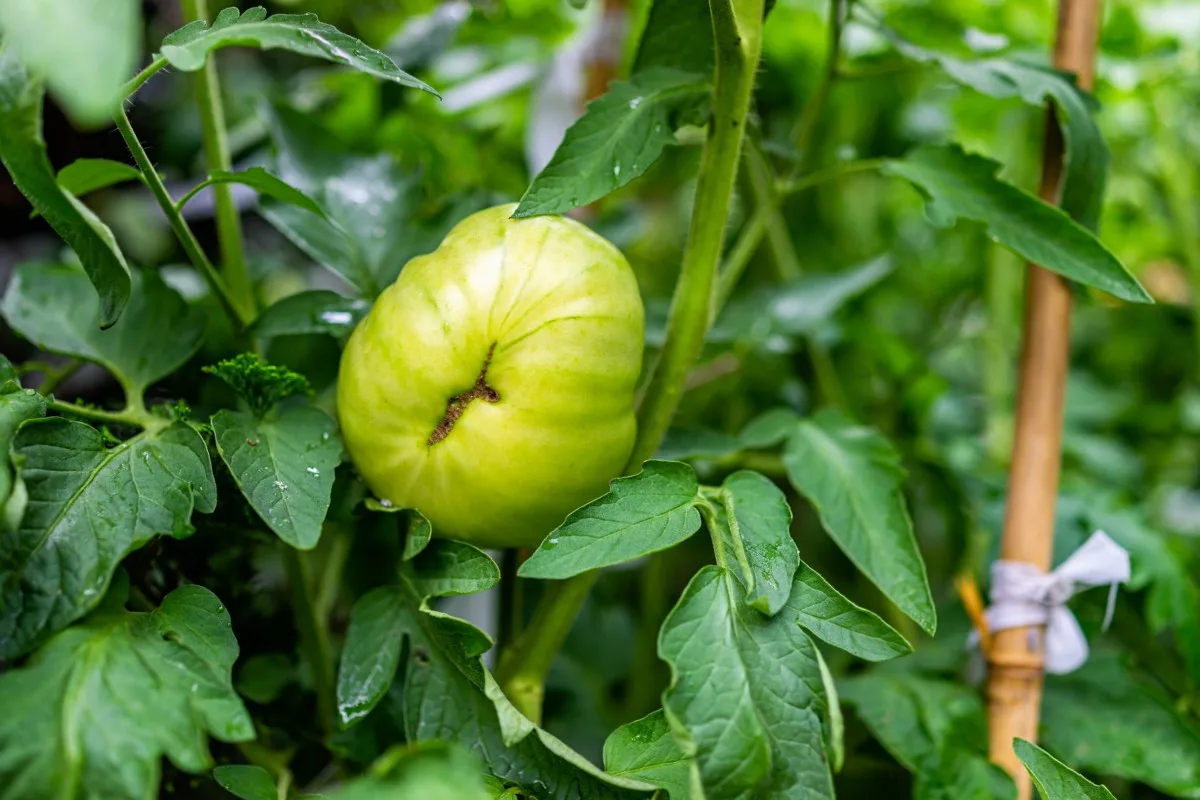
Generally, it’s believed that damage to the developing flower must occur to trigger catfacing. However, scientists are unsure what this damage is or how extensive it has to be for the tomato to develop these physical abnormalities.
Cool Nighttime Temperatures
It’s been shown that catfacing occurs more often in tomatoes that experience colder nighttime temperatures during the development of flowers. Most commonly, this happens in the spring with the first set of fruit. This problem usually fixes itself as the season progresses with warmer temperatures and fewer incidents of catfaced tomatoes as the plant matures.
But it can resurface if you get a stretch of colder evenings. Oddly enough, the University of Maryland notes that this only applies to nighttime temperatures. So, you could have beautiful 80-degree weather all day, but if you get a stretch of cold nights, your tomatoes will be more susceptible to catfacing.
Too Much Nitrogen
Another theory is that high nitrogen levels can lead to catfacing, although most ag extension articles referencing this fail to say why. There is enough anecdotal evidence among commercial growers to support this theory, but again, it’s uncertain why too much nitrogen would cause this problem. It’s important to know how much and when to fertilize tomatoes.
Excessive Pruning
Another theory is that heavy-handed pruning practices can lead to catfacing in fruit. This is generally attributed to indeterminate varieties. The theory is that heavy pruning depletes the plant of a type of growth hormone called auxins. Auxins are necessary for things like cell division and root and tip growth.
If this is the case, then catfacing would appear to be caused by something on the cellular level.
Thrip Damage
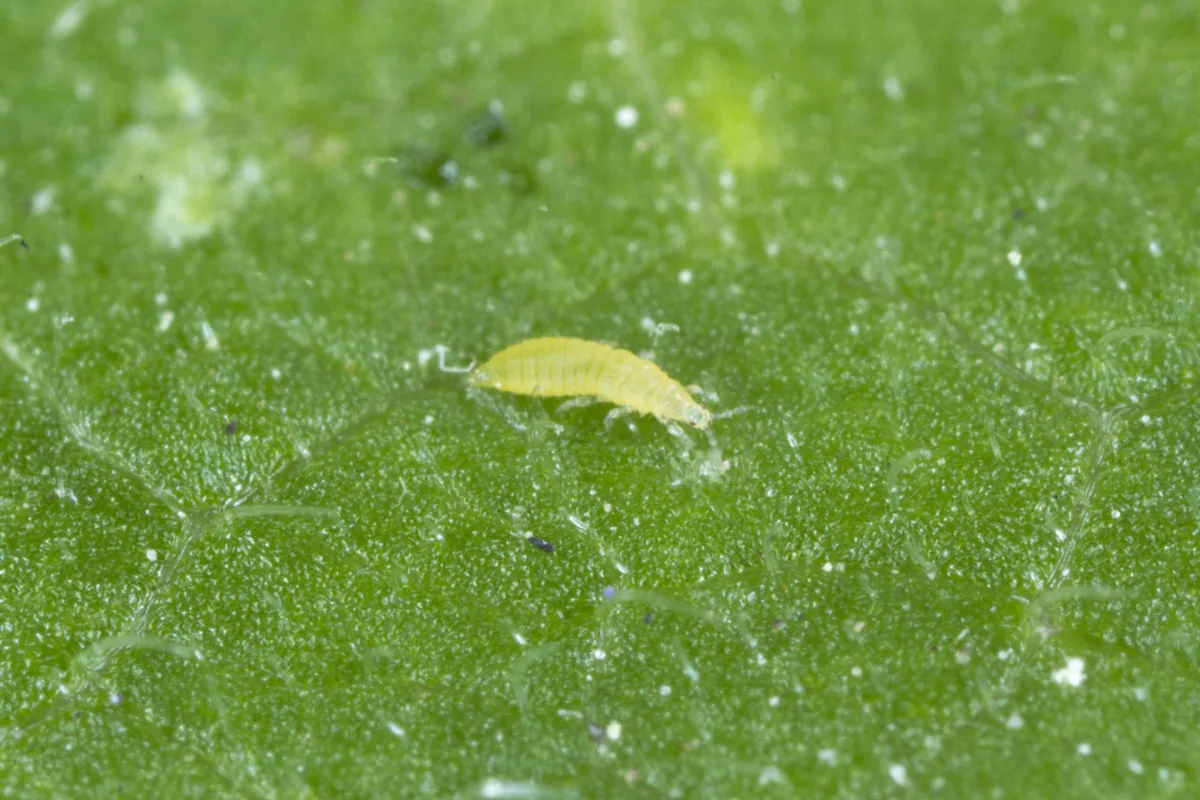
An infestation of thrips can result in catfaced tomatoes as they target the pistil of developing blooms.
Heirlooms
One thing agreed on across the board is that catfacing occurs more often in older, heirloom varieties than in newer hybridized tomatoes, specifically, heirloom varieties that produce large tomatoes.
How Can I Prevent Catfaced Tomatoes?
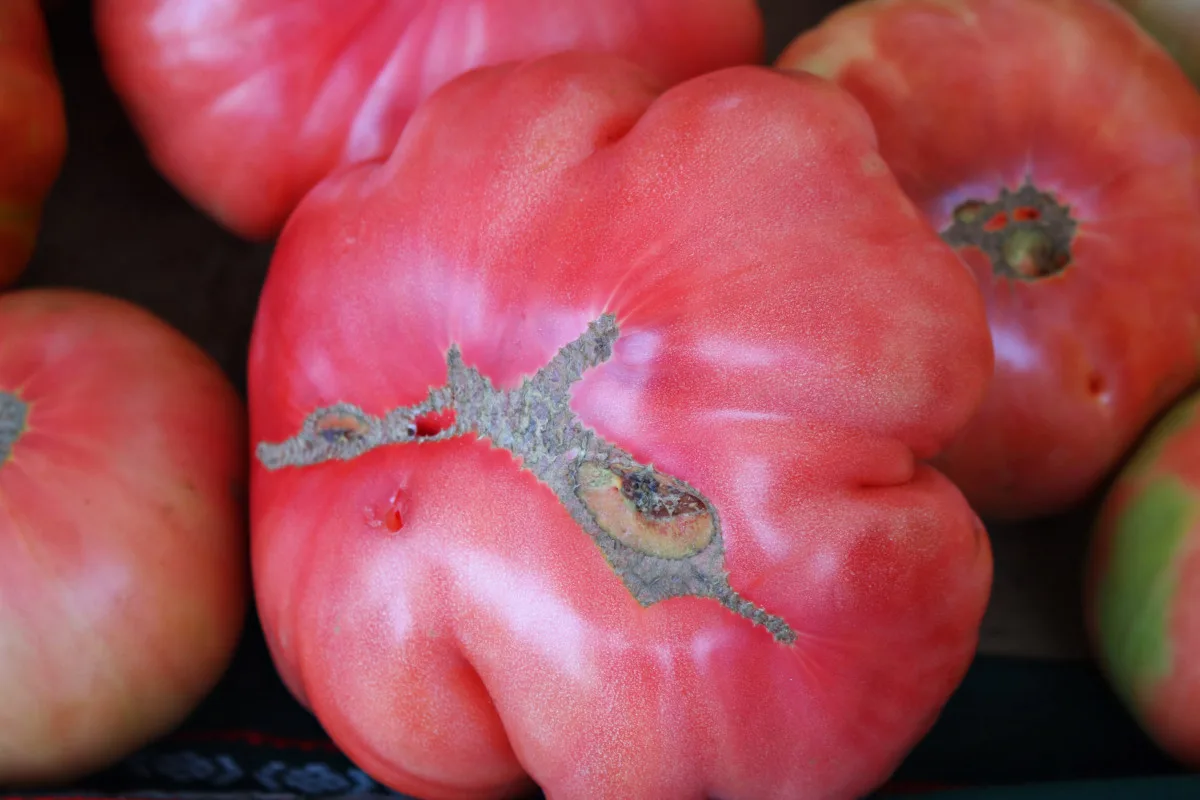
- As much as we may want to be the first person on our block to enjoy vine-ripened tomatoes, consider waiting until evening temperatures are consistently above 55 degrees before putting your transplants outside. This may mean waiting an extra week or two past the expected final frost date in your area.
- Test your soil before adding any fertilizers, and only add nitrogen if there is a deficiency. Once your tomato begins to set fruit, skip the nitrogen and feed with phosphorous to encourage proper bloom growth.
- While it’s important to prune your tomatoes, go easy, taking only ¼ of the entire plant. Or you can avoid the problem altogether and choose to grow determinate varieties.
- Also, consider choosing hybrid tomatoes and skipping the heirloom varieties if you want good-looking and tasty tomatoes.
While we may not have the answers yet as to the exact cause of catfaced tomatoes, these theories can give us a few clues as to how to try to prevent it. Because the exact mechanism that causes it is unknown, these suggestions are just that, suggestions. They may or may not prevent this bizarre malady from showing up in your tomatoes.
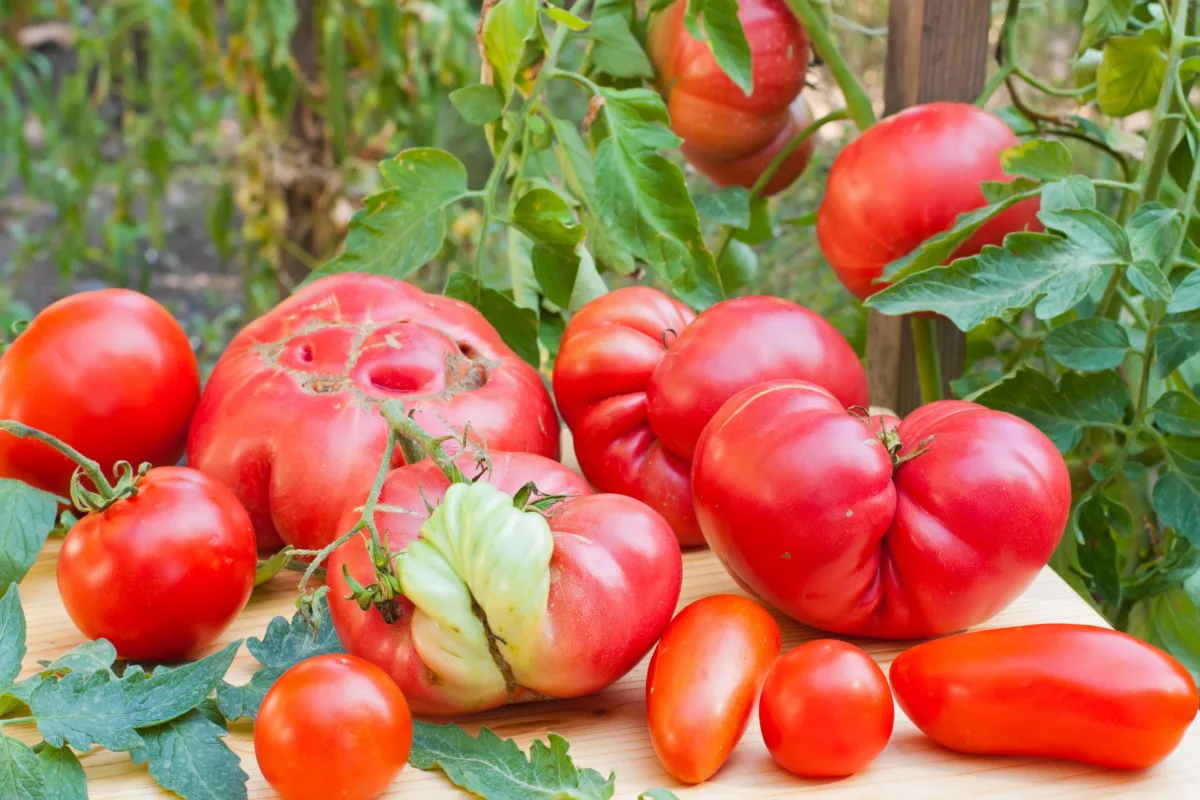
But in the end, as long as you still get sweet, delicious, juicy tomatoes to eat, do they have to be pretty?

Get the famous Rural Sprout newsletter delivered to your inbox.
Including Sunday musings from our editor, Tracey, as well as “What’s Up Wednesday” our roundup of what’s in season and new article updates and alerts.


